
篱苑书屋|LiYuan Library / Li Xiaodong Atelier
李晓东:我用能量识别形式
"I Identify Forms with Energy": Li Xiaodong of Li Xiaodong Atelier
由专筑网李韧,曹逸希编译
来自北京的清华大学教授李晓东,我对他的直接印象就是他身上透露着一股自信。在采访结束之后,教授问了我一个问题,他问我想要在清华大学教书吗?我回答,“我从来没有当过老师。”他很快说,“我知道,但是你可以教书,是吗?”对于生活的想法,我认为应当是先抓住机会,然后再考虑。“如果他对我这么有信心,那么我也应该相信他。”我想。
我当场就接受了邀请,2018年的整个秋季学年,我都在清华大学。对于李晓东的进一步了解,只是为了证明我的最初印象,这位教授的成熟与自信使得他和其他的建筑师或教育工作者有很大的不同,他是中国多位年轻建筑师的导师,同时在教学与实践方面,他也是权威人士。其建筑作品非常特别,同样十分引人注目,其中的舒适度、吸引力、美学理念,都远远大于人们对其的第一印象,其建筑作品不经过过多计算与掩饰,但是透露着一股完美与自信。其设计概念根植于中国的传统与文化,而对于欧美、新加坡等地的文化研究,更加明确了他的设计方向,他的履历看起来非常出色,其于1984年毕业于清华大学,1993年获得TU Delft的博士学位,而1997年创立了李晓东工作室,在中国,用创始人名字作为工作室名称的案例较少。在2010年,李晓东还获得了阿迦汗建筑奖,在2011年被GQ杂志誉为中国最具影响力的人物。他是一位睿智好奇的人物,在我看来,他会提出让我任教是因为我们有着某种共识,那便是教学的基础,即建筑充满了争议。
One of the immediate impressions that I formed of the Beijing-based architect and Tsinghua University Professor Li Xiaodong (b. 1963) is his reassuring self-confidence. Following our interview, Professor Li asked me a question of his own - would I like to teach at his school? “I never taught in my life,” I replied. He quickly countered, “I know. You can teach. Yes or no?” If I have learned anything about life, it is that when opportunities come you should grab them first and think later. "If he is so confident in me, why shouldn’t I trust him?” I reasoned.
I accepted his offer on the spot, staying at Tsinghua through the fall semester of 2018. Getting to know him only further confirmed my initial impression: Li's maturity and confidence sets him apart from both other architects and other educators. He is a true guru to many young architects in China; an undisputed authority equally dedicated to teaching and practicing. His architecture is very special. It is comforting, yet striking; seductively beautiful, yet profound far beyond its first impression. It is not calculated, not over-refined; unmasked, layered, and well, self-confident. His stance is firmly rooted in Chinese history, culture, and philosophy, reinforced in turn by many years of self-search and studies in Europe, America, and Singapore. His CV boasts extensive credentials: he graduated from Tsinghua in 1984, obtained his PhD from TU Delft in 1993, and in 1997, he started Li Xiaodong Atelier, one of only a few independent practices in China that dared to put the founder’s full name on its door. Li was the recipient of the 2010 Aga Khan Award for Architecture and, in 2011, was named Man of the Year in China by GQ magazine. He is complex, incisive, and inquiring. I think he offered me to teach because we agree on one key thing, which is fundamental for teaching – architecture is a matter of debate.
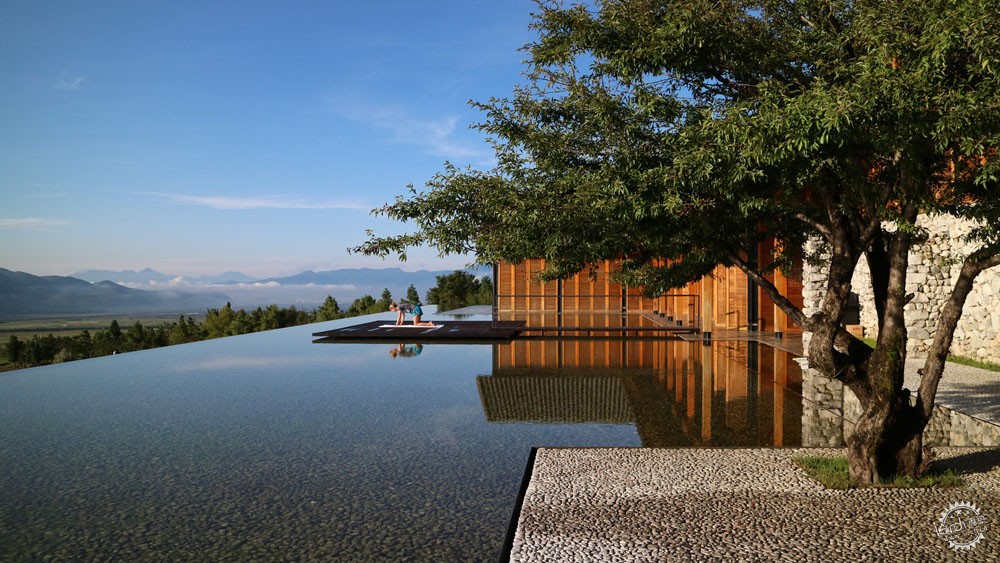
淼庐|Water House / Li Xiaodong Atelier
Vladimir Belogolovsky(下文成为VB):我们的采访地点是清华大学的建筑设计中心,这是你在几年前的设计作品,建造于2014年,但是这座建筑看起来有点像20世纪现代主义风格。你好像并不关心行业的发展趋势,你的许多作品和其他建筑师之间存在着一定区别,你是否同意这个观点呢?你如何看待你的作品?
李晓东(下文称为李):我是一位自我反思的地方主义者。我会处理诸如预算、功能、气候等问题。这些问题较为复杂,并没有什么先入为主的观念。我不相信建筑能够表现个人风格,这种说法也不符合可持续观点。建筑不是绘画或者雕塑,一幅绘画作品有构图逻辑,但是建筑有功能性,有周围环境,绘画就只是其自身而已。
我比较有兴趣的是,找出解决特殊问题的特殊方案,建筑解决策略应该以实际出发,它们自然而然的产生,并且适应当地的状况。我在这里称其为自然,但是我也不否认个性的重要,例如北京不是上海,也不是云南,建筑师都有着不同的理解方式,你可以很自然,也可以很个性,这并不矛盾。
Vladimir Belogolovsky: Our interview is taking place at the Architecture and Design Centre at Beijing’s Tsinghua University. You designed it just a few years ago and built in 2014, but could be easily mistaken for the product of the mid-20th century Modernism. You don’t seem to be concerned with the latest trends in the profession; there is a certain misalignment between your work and the work of many other Chinese architects. Would you agree? How do you see your architecture?
Li Xiaodong: I see myself as a reflective regionalist. I address specific conditions such as the budget, the program, and the climate. It is complicated, and nothing is preconceived. I don’t believe in architecture as the expression of an individual style. I don’t think it is sustainable. Architecture is not a painting or sculpture. A painting has a compositional logic. But architecture is functional. And architecture has neighbors, whereas a painting can be a world in itself.
I am interested in identifying solutions to address very particular conditions. Architectural solutions should be based on reality. They should be natural and adapted to real-life conditions. And when I say natural I don’t at all deny the importance of individuality. Beijing is different from Shanghai and very different from Yunnan, and we architects all have our very different ways of understanding architecture. You can be natural and individual. There is no contradiction in that.
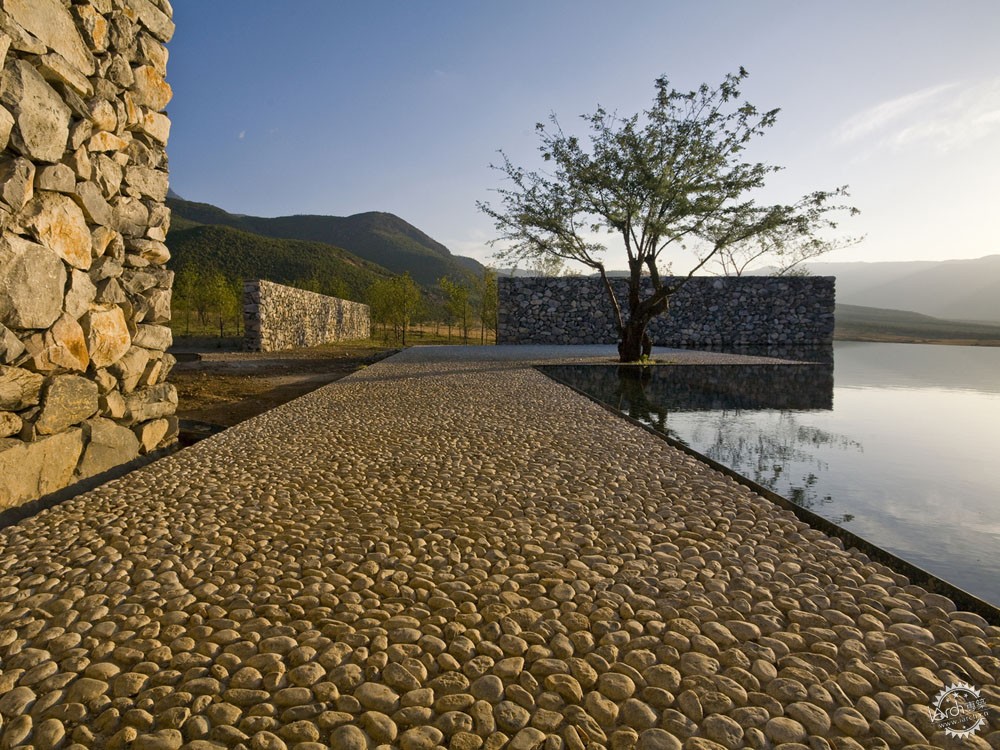
淼庐|Water House / Li Xiaodong Atelier
“你可以很自然,也可以很个性,这并不矛盾。”
"You can be natural and individual. There is no contradiction in that."
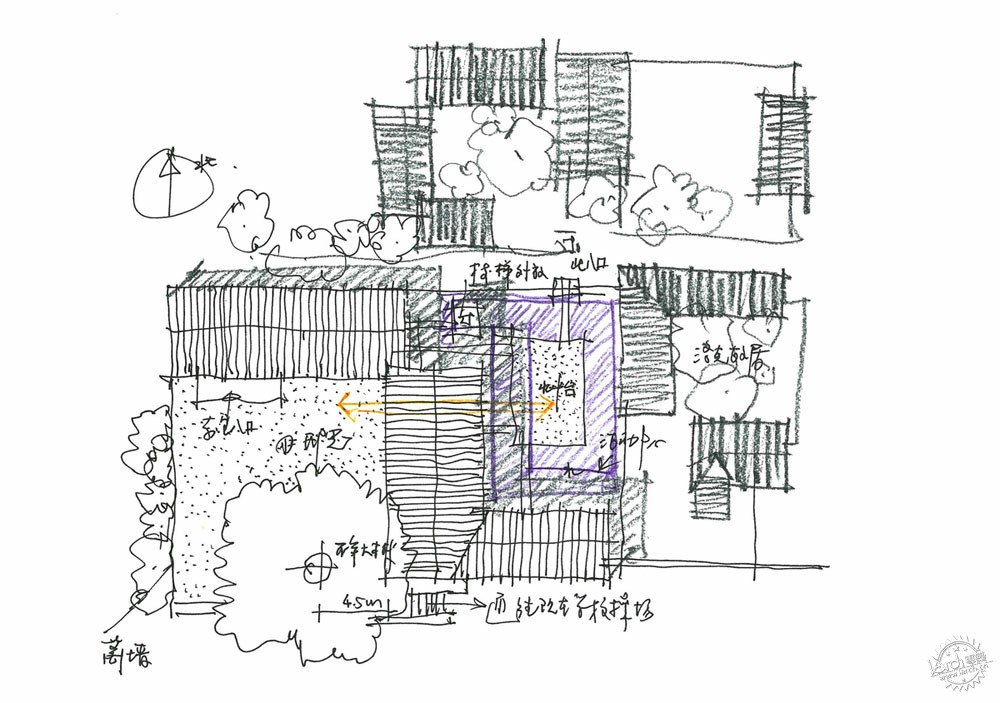
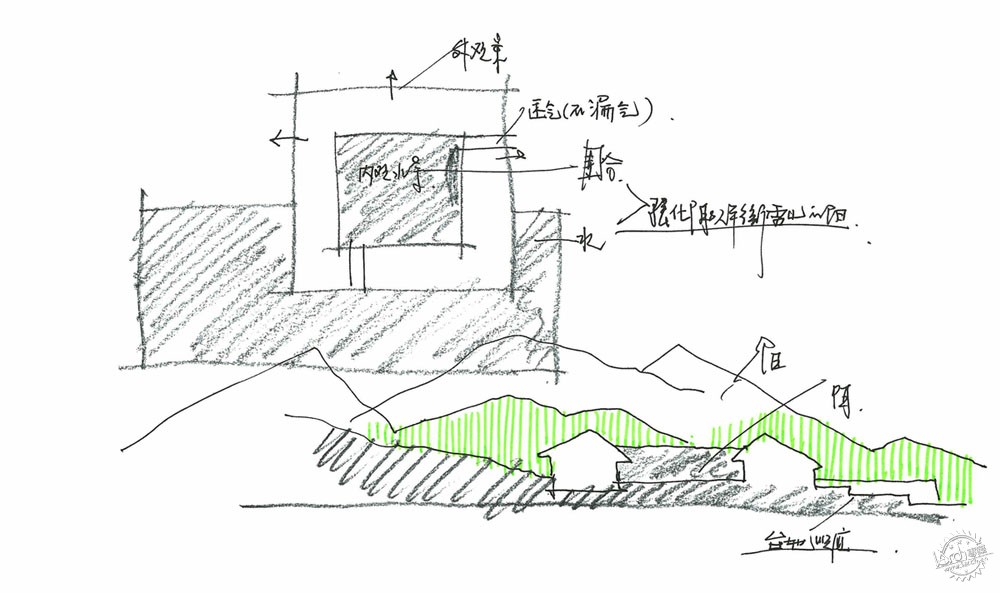


淼庐|Water House / Li Xiaodong Atelier
VB:你刚开始做一些项目的时候,会分析场地与其中的能量流动,你能说说你的设计过程吗?你怎么开始一项设计呢?
李:这是个秘密(笑)。我练习了很多年太极,整个系统既向内又向外,这关乎呼吸与能量流动。它能够让我集中注意力,让感官变得更加敏锐,因此我比那些不研究能量的人会更加了解能量。
当我开始做项目的时候,我首先分析的就是项目场地和它的能量流。大多数人们会通过形式、颜色、材料来识别形式。但是我会用能量来识别形式,这是一种很抽象但又真实的说法。另外,我会尽量简化我的设计作品,我只用一些必须的元素。中国文化与西方文化之间的主要区别就在于西方人希望通过设备来提高效率,但是中国人并非如此,中国人习惯用简单的工具来做复杂的事情,例如筷子,你如果把握得很好,那么你可以夹起任何东西。在我的作品中,我就想要反应这种观念,建筑是识别当代生活的创造性思路。
30年前,我们都在寻求个人风格。但是我并不认为这种方法满足可持续发展。我们的资源有限,但是风格却花费巨大。
VB: You said that when you start working on a project you first analyze the site and the flow of energy through it. Could you touch on your design process; how do you begin?
LX: It is a secret. [Laughs.] Well, I have practiced tai chi for many years, which is about simultaneously looking inwards and outwards; it is a system of breathing and energy flow. It enables you to focus your mind so intensely that all your senses become more alert. So I understand energy better than those who don’t study it.
The first thing I do when I start a project is analyze the site and the flow of energy through it. Most people identify forms with shapes, color, and materials. But I identify forms with energy. It is very abstract, but it is very real. Also, I try to be very minimal in my designs. I only use what’s necessary. The key difference between Chinese and Western cultures is that in the West people use all kinds of devices to be efficient. But Chinese have to practice with the simplest tools we have to do very complicated things. Chopsticks is a good example – you can pick up anything with chopsticks if you practice well. You don’t need to use knife and fork. In my practice I try to reflect this attitude. Architecture is a creative solution that identifies a contemporary lifestyle.
30 years ago, we were all looking for discovering personal styles. But now I don’t think that kind of approach would be sustainable. We know how limited our resources are. Styles cost money.
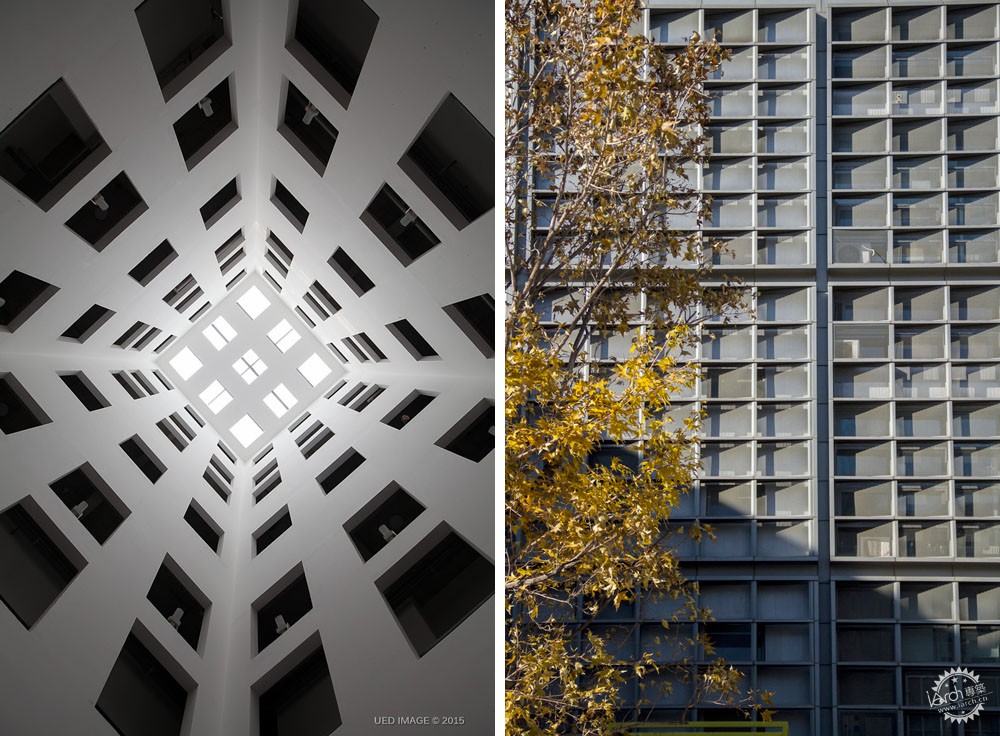
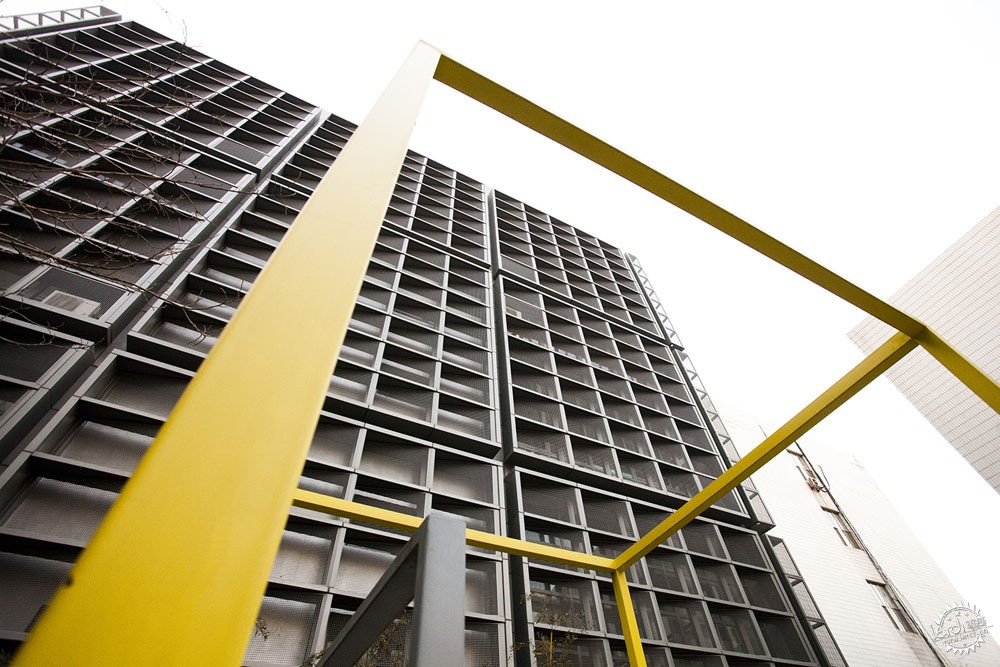
清华大学建筑学院系馆加建|New Building of School of Architecture / Li Xiaodong Atelier
VB:自从2008年金融危机之后,建筑师们就不断地谈论着经济策略的重要意义。但是就我看到的各种建筑来看,不管建筑师嘴上怎么讲,但是建筑还是愈发复杂与昂贵。
李:我的建筑造价很低。对我来说,经济策略是主要的关注点。可持续性由许多问题组成,而造价便是其中之一。例如,我常常应用正交网络系统来提高工作效率,这不仅是流线还是结构方面,都十分有益。我还会避免一些较深的悬臂体系或是特殊的空间形式,因此我的作品在形式上并不特别。
VB:你为什么会这么说?如果你的作品没有特别之处,那客户为什么会选择你?你一定有独特之处?
李:我想要构建美丽与难忘的环境。但是我并不会创造过多形式上的东西,我希望构建一座合乎逻辑且满足可持续发展、同时结合时代的作品。在我的作品中,我不喜欢花哨的东西,也不喜欢用同样的方式来解决每个问题。建筑本身就存在争议,建筑的设计方式应该基于分析体系,而非预想的形式。
VB: Ever since 2008 world financial crisis architects have been talking about the importance of the economy of means. But from what I am seeing being built around the world the buildings are becoming only more complex and more expensive despite what the architects say.
LX: My buildings are very cheap. For me, the economy of means is one of the main concerns. Sustainability is composed of many issues and cost is one of its main components. For example, I often use an orthogonal grid that helps me to bring greater efficiency to my projects – both in terms of circulation and achieving the simplest structural support. I always avoid deep cantilevers or special design forms and details. There is nothing special in my architecture in terms of forms.
VB: Why are you trying to downplay your architectural qualities? If you say, there is nothing special in your work why would clients want to hire you? What makes you special?
LX: I want to achieve very beautiful and memorable environments. But I am not trying to create intentionally iconic forms. I want to create architecture that is logical, sustainable, and that speaks of its time. In my architecture, I resist using clichés. I don’t like when architects approach every problem with a fixed solution. Architecture is a matter of debate. Solutions in architecture should be based on analysis, not on preconceived forms.
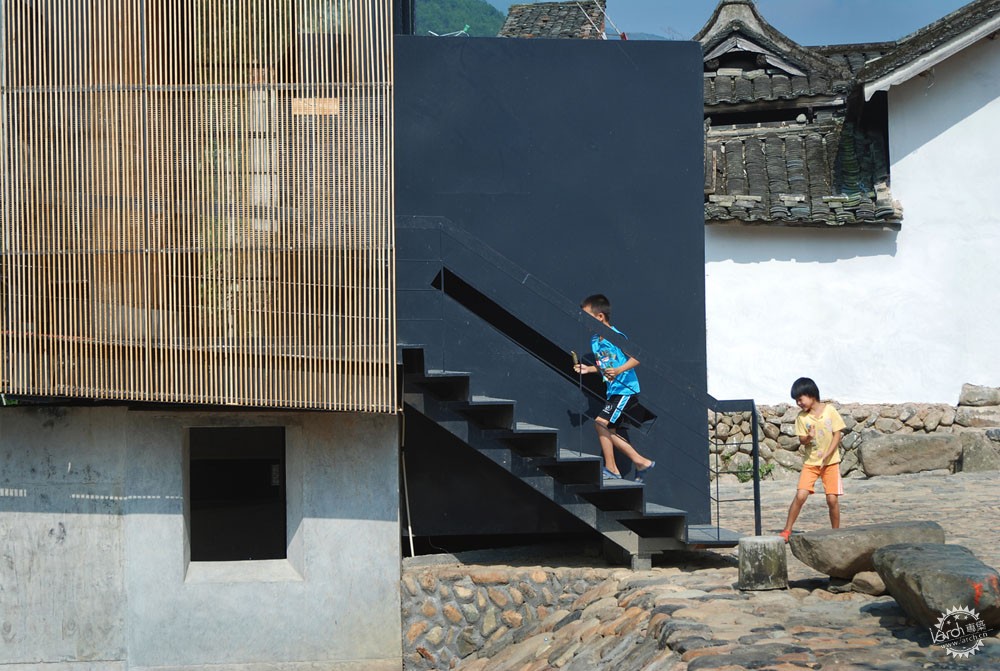

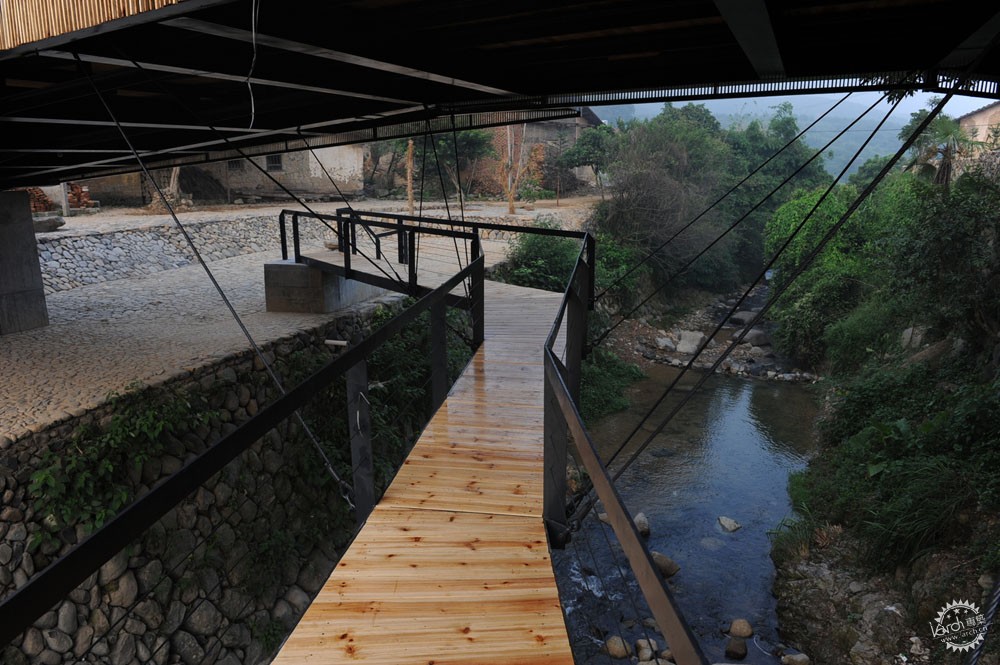
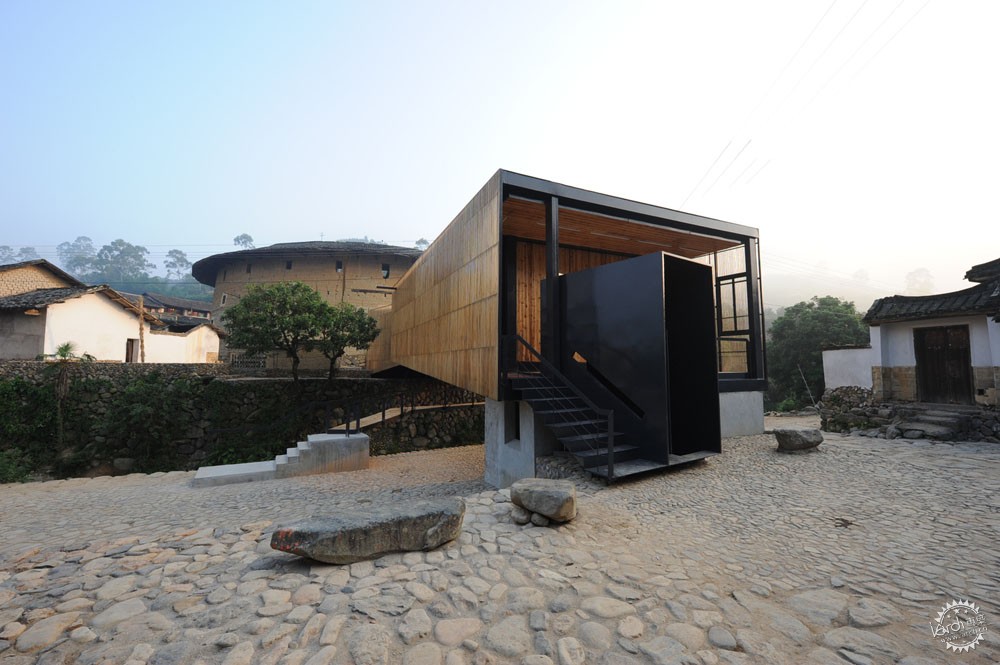
平河小桥学校|School Bridge / Li Xiaodong Atelier
“建筑本身就存在争议,建筑的设计方式应该基于分析体系,而非预想的形式。”
“Architecture is a matter of debate. Solutions in architecture should be based on analysis, not on preconceived forms."
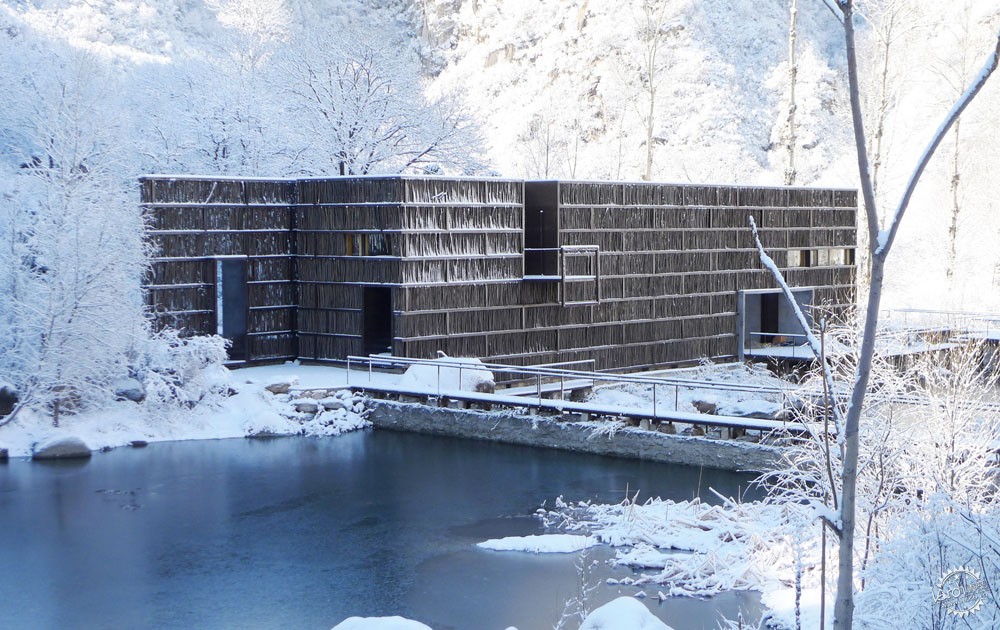
篱苑书屋|LiYuan Library / Li Xiaodong Atelier
VB:那我们来说说你的篱苑书屋,该项目位于北京北郊,由回收的树枝建造而成。
李:这座小建筑由树枝建造而成,但是这并不是装饰,它们都具有功能性,因为需要将光线过滤到建筑内部。当设计这个项目时,我发现周边有着许多树枝,这好像是整个村庄中最重要的材质。而村民们会用这些树枝来取暖烹饪。那么我就想把这种材料保留下来。
VB:看到你的作品时,跃入脑海中的词是缓慢、停留、无形、反射、渗透、限定、无定义、分散、开放、自然,等等。那么你想到了什么呢?你用哪个词来描述你的建筑?
李:自然的、间接的、逻辑
VB:你曾经说,“最重要的是,我们需要找到建筑的未来发展方向,同时既不模仿西方的模式,又不依赖中国的传统与形式”。你其中用的是“我们”,意思是中国建筑师。那么,你认为中国建筑师对于当代中国建筑需要有着统一的观点吗?他们之间应该有共同点吗?
李:每位中国建筑师都应当考虑如何为建筑做出贡献。我们分享了一种文化内涵,并且需要将这种文化内涵用到建筑之中。中国传统建筑并非形式,而是空间。我曾经写了一本书,关于“空间的中国观”,主要关于空间的无形之感。我的所有观点都来自于中国传统建筑。我在荷兰和美国工作生活了许多年,但是我的作品中并不会带有多少异国气息。我的作品根植于中国文化,并且我习惯于用现代方式来表达想法。因此我的建筑充满现代特征。
VB: Let’s talk about your Liu Yayun Library that you designed with recycled twigs in Laojiehe village, in the northern outskirts of Beijing.
LX: This small building is identified by twigs but not in a decorative way. They have a function. They filter light into the interior. When I worked on this project I found twigs everywhere. It was the most important texture that touched me in this village. The villagers collect the twigs and use them for heating and cooking. Naturally, I wanted to preserve this feature as part of my architecture.
VB: When I look at your buildings the words that come to mind are: slow, still, intangible, reflective, permeable, framed, undefined, out of focus, open-ended, part of nature, and so on. What do you see? What single words would you choose to describe your architecture?
LX: Natural, consequential, logical.
VB: You have said, “This is what matters: we need to find ways of developing our architecture without aping Western models or relying on superficial imitation of traditional Chinese forms and decoration.” When you say “we” – you are talking about the Chinese architects. Do you believe the Chinese architects need to have a particular collective perspective on what contemporary Chinese architecture should be? Do you think there should be common ground among Chinese architects?
LX: I think every architect in China needs to think about how we can contribute to contemporary architecture. We share an incredible culture that we can turn to for inspirations to bring to our contemporary practice. Traditional Chinese architecture is not about form but about space. I wrote a book about this, it is called Chinese Conception of Space. It is about the intangible feelings of space. All of my ideas come from Chinese traditional architecture. I lived and worked for many years in the Netherlands and the United States, but I don’t think anyone can find in my work any particular influences by the Dutch or American architecture. My work is rooted in Chinese culture, although I always try to express my architecture with contemporary means. My architecture is contemporary.
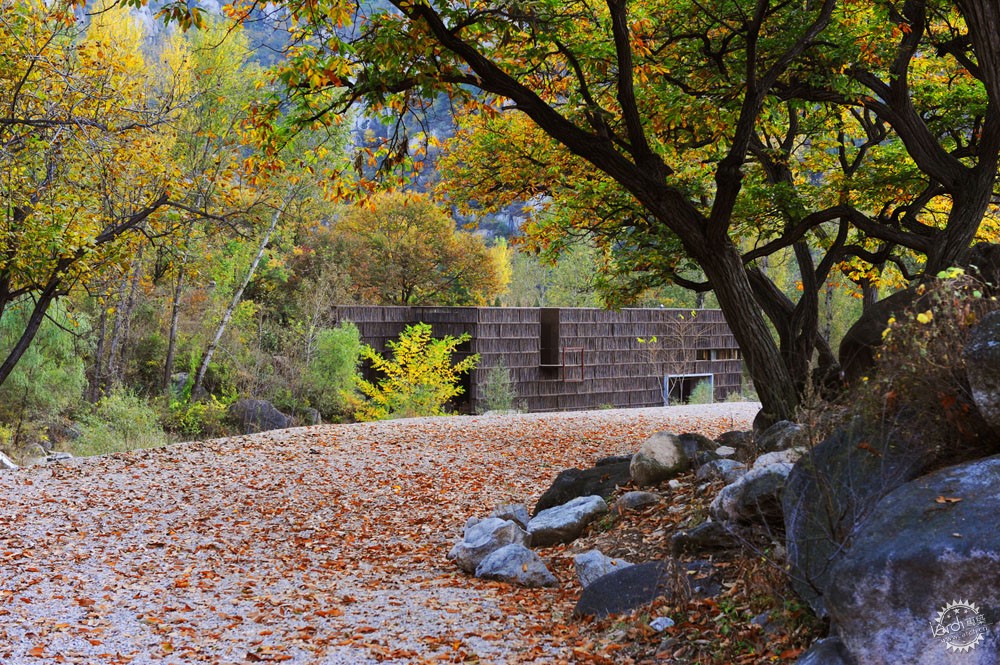

篱苑书屋|LiYuan Library / Li Xiaodong Atelier
VB:所以,无论是传统中国建筑,还是你的现代作品,你都更关注空间是吗?
李:当然是的。中国传统的建筑形式几百年来都不曾改变,老子说过,“埏埴以为器,当其无,有器之用;凿户牖以为室,当其无,有室之用”。同样地,形式也并不重要,其中更多的是关乎原有条件,而非原有形式。
就历史来看,中国传统为农业社会,那么集体意识就很重要。举例来说,孔子说到等级制度对于政治稳定性的重要作用。社会并不关乎个人,而是人们该如何共同合作与进步,否则就会一事无成。而创造需要个性,但是个性从来都不是中国历史社会上的主要矛盾,集体主义比个性表现更为重要。
VB: So, it is the focus on space that you take from traditional Chinese architecture to your contemporary work, right?
LX: Absolutely. You can see that the form did not change in traditional Chinese architecture for hundreds of years. Just like Lao-Tzu said, what is important is what is contained, not the container. Again, forms were never important here. It is more about identifying original conditions than inventing original forms.
Throughout its history, Chinese society was largely agricultural, for which you need a collective mindset. For example, Confucius talked about the importance of hierarchy to ensure political stability. Our society was not about the individual but about how we could work and progress together. Otherwise, there is chaos. Creativity needs individuality, but individuality was never an important issue in Chinese society historically. Collectiveness was more important than expressing individuality.

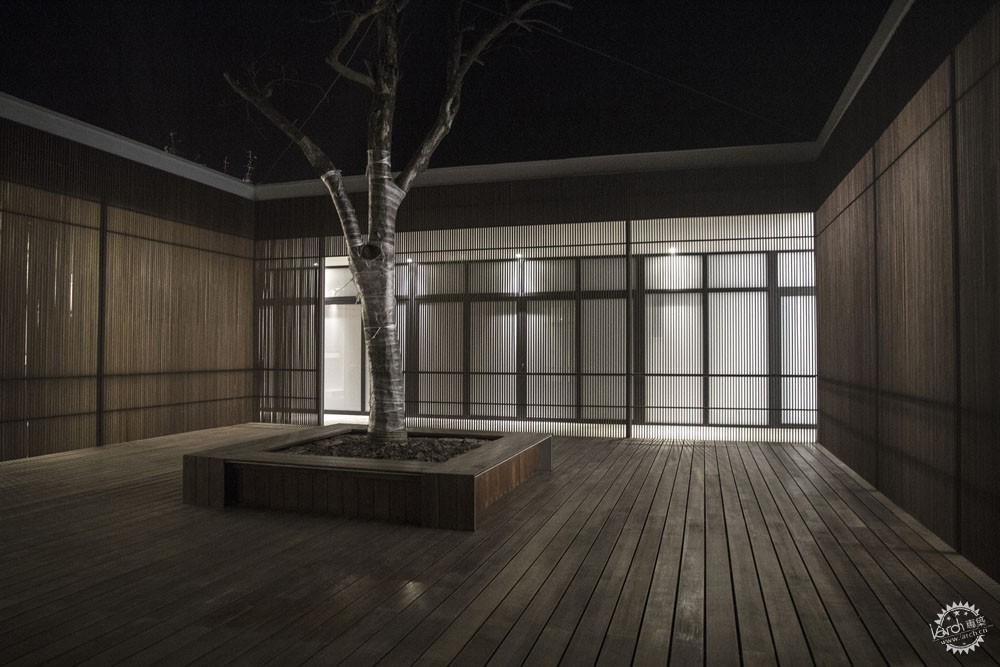

宁波涤尘谷山地小筑|Ningbo Project / Li Xiaodong Atelier
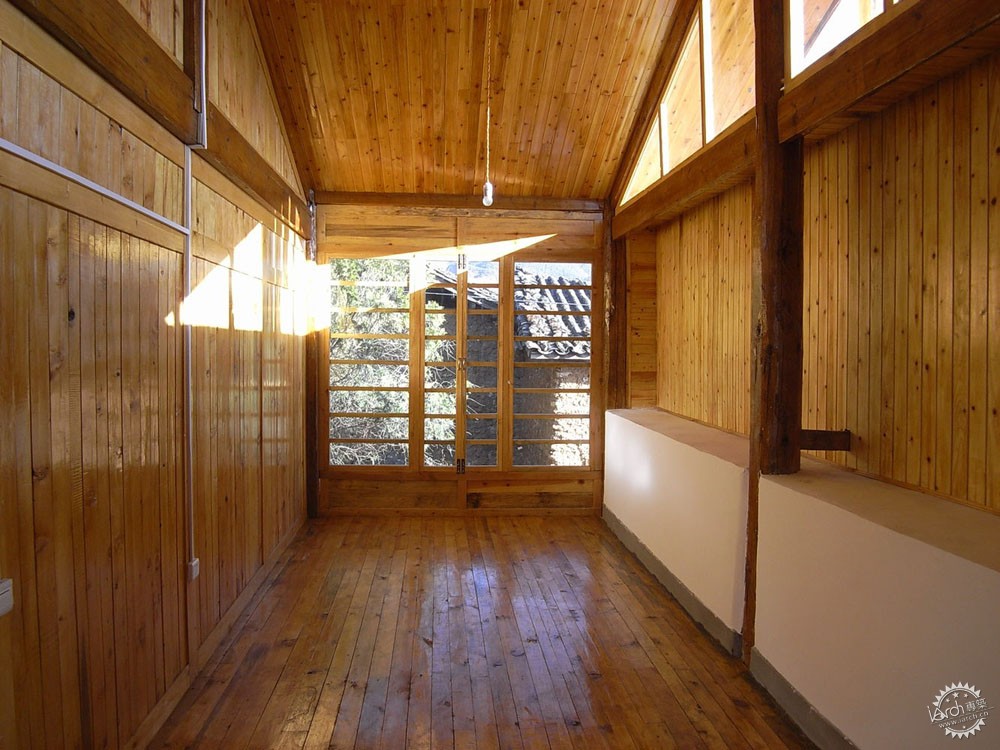
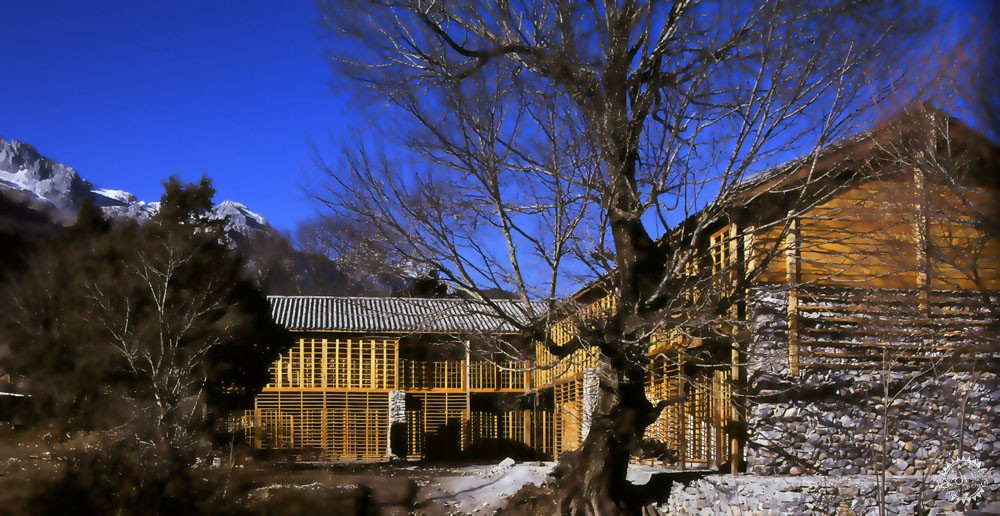
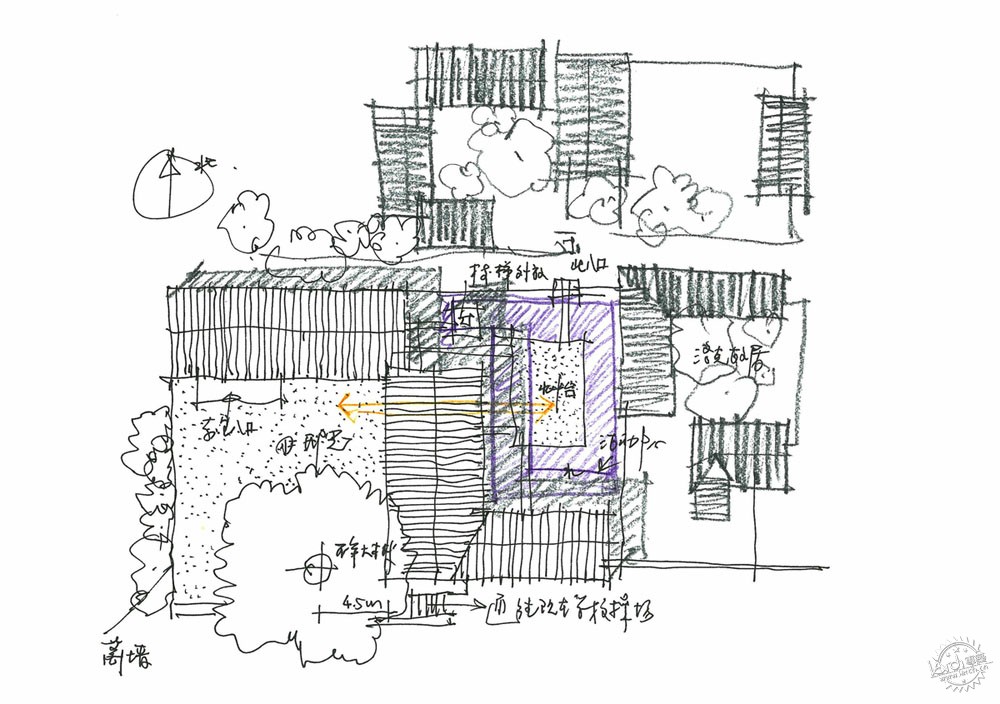
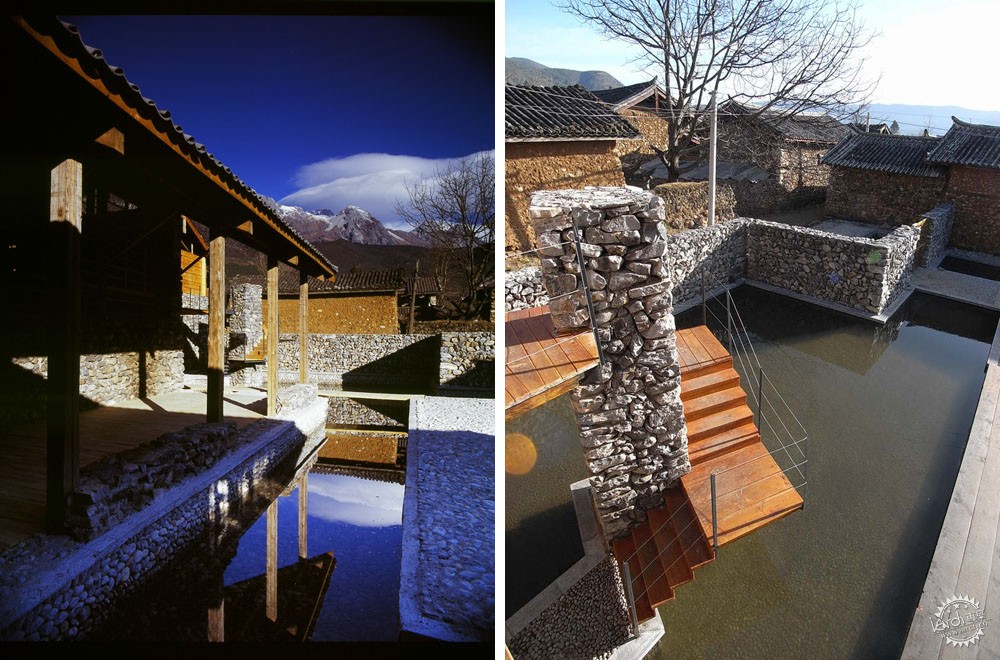
丽江玉湖完小|Yuhu Elementary School / Li Xiaodong Atelier
作者简介:
VLADIMIR BELOGOLOVSKY是纽约非营利Curatorial项目的创始者,他在纽约库伯联盟学院学习建筑,并且著有9本著作,其中包括、《纽约:建筑指南》(2019年)、《名人时代的建筑师对话》(DOM, 2015)、《Harry Seidler: LIFEWORK 》(Rizzoli, 2014)、《苏维埃现代主义:1955-1985》(TATLIN, 2010)。另外还有许多大型展览,即2012年的世界巡回展览“Harry Seidle:绘画建筑”,2017至2018年的“Emilio Ambasz”、2016年起的“Sergei Tchoban”,还有2008年威尼斯建筑双年展俄罗斯展馆的“象棋游戏”。 Belogolovsky还是柏林建筑杂志“SPEECH”的美国记者,在2018年,他是北京清华大学的受邀学者,并且曾经在超过30个国家的高校和博物馆进行演讲。
Belogolovsky的专栏“理念城市”为ArchDaily的读者介绍了他与世界知名建筑师的对话,自2002年起,他采访过超过300位建筑师,而这些密切会谈也是2016年6月悉尼大学展览的主题内容,“理念城市”将会在世界各地举办巡回展览,从而不断地探索设计与理念。
VLADIMIR BELOGOLOVSKY is the founder of the New York-based non-profit Curatorial Project. Trained as an architect at Cooper Union in New York, he has written nine books, including New York: Architectural Guide (DOM, 2019), Conversations with Architects in the Age of Celebrity (DOM, 2015), Harry Seidler: LIFEWORK (Rizzoli, 2014), and Soviet Modernism: 1955-1985 (TATLIN, 2010). Among his numerous exhibitions: world tours of the work of Harry Seidler (since 2012), Emilio Ambasz (2017-18), Sergei Tchoban (since 2016), Colombia: Transformed (American Tour, 2013-15), and Chess Game for Russian Pavilion at the 11th Venice Architecture Biennale (2008). Belogolovsky is the American correspondent for Berlin-based architectural journal SPEECH. In 2018, he was a visiting scholar at Tsinghua University in Beijing. He has lectured at universities and museums in more than 30 countries.
Belogolovsky’s column, City of Ideas, introduces ArchDaily’s readers to his latest conversations with the most innovative international architects. Since 2002, he interviewed over 300 architects. These intimate conversations are featured in the curator’s ongoing site-specific installations made up of voice recordings and thought-provoking quotes.
|
|
